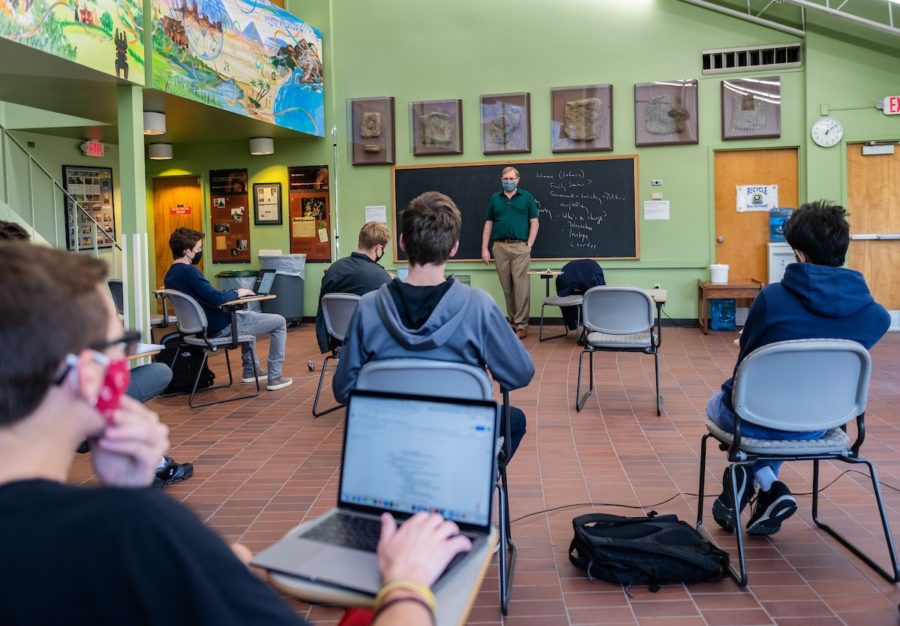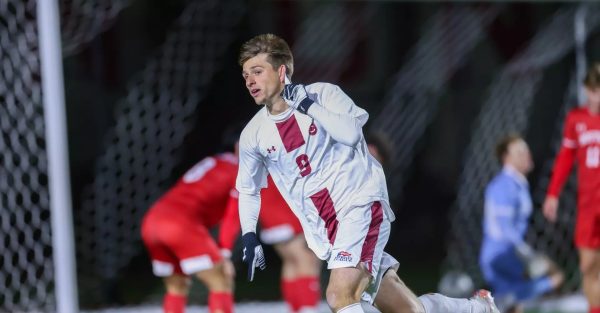New Changes To Gate 3 Results in Increased Freedoms for Students
Amid concerns that large off-campus gatherings over recent weeks may cause a spike in COVID-19 cases on campus, the Task Force on Reopening and the Health Analytics Team (HAT) recommended moving to Gate 3 on March 10 after a recent round of testing did not detect any new cases of COVID-19.
Vice President for Communications Laura Jack announced the transition between Gates in an email sent to the student body on Tuesday, March 9, reporting that Gate 3 would move into effect beginning at 7 a.m. on Wednesday, March 10. No students were in isolation at the time, though five individuals remained in close contact quarantine.
According to Associate Professor of Biology and co-Chair of the Task Force on Reopening Geoff Holm, the task force initially delayed its decision to move to Gate 3 to account for the possible lag time between student exposure and positive results.
“If we have a situation where there are a large number of students infected all at once, with an additional large number of close contacts, we can run out of quarantine and isolation space very rapidly, which could force us to go to remote status for the remainder of the academic year,” Holm said.
In the same email, Jack reiterated that 80% of infections result from super-spreading events. Both Holm and Jack referenced the outcomes of peer institutions, such as the United States Naval Academy and Brown University, where students’ partying behavior led to campus outbreaks. To ensure that a similar situation had not occurred as a result of off-campus partying, the University continued surveillance of wastewater data and PCR testing during the following week.
While Gate 3 would typically allow for gatherings of up to 25 individuals, the guidelines did not align with state regulations, which limit gatherings to 10 people. Considering the lack of congruity between state and university guidelines, Holm and other members of the task force did not want to announce the transition to Gate 3 if the same restrictions of Gate 2 still applied.
As was announced in Jack’s email, under the revised Gate 3, bedroom visitation is allowed with roommate consent, though mask-wearing for non-direct family members and physical distancing must still be observed. Direct family members, such as roommates, are also now permitted to carpool in personal vehicles.
“Having people allowed in rooms has allowed for a sense of community that was inhibited before. I think that as long as people are being safe and honoring the rules while in other rooms, it is a really nice addition to Gate 3,” first-year Charlotte Lawson said. “Now that we have all seen the importance of following the Commitment to Community Health in order to stay on campus, I think students will be more likely to respect those rules even with this extra bit of freedom.”
While individuals are now permitted to visit one another in dorm rooms, Jack reminded students that “all of these activities carry some degree of risk,” even if they do not pose the same risk indoor dining or super-spreader events might.
The Task Force on Reopening and HAT reiterated the importance of keeping masks on, avoiding eating together in rooms and opening windows whenever entering a personal vehicle. Any one activity could result in being identified as a close contact should one individual test positive for COVID-19.
Unlike Lawson, who expressed satisfaction with the new guidelines, sophomore Sophie Buchman did not feel that the rules were loose enough given recent research exploring the risk of indoor dining versus room visitation.
“I don’t feel as if the changes in Gate 3 have impacted me because everyone is still on such high alert all the time that it’s hard to have a ‘good time.’ Even when we are allowed to be in each other’s rooms, we are supposed to be socially distanced with masks,” Buchman said. “These are the same people we can openly eat lunch with. If I were to cough on a friend in the dining hall, it is no different than if I cough on them in my room.”
While Holm affirms that both activities do not pose the same risks that super-spreaders might, the task force and HAT will continue to monitor testing over the next few weeks to ensure that transmission does not rise as a result of loosened guidelines. The University will continue to test students at the same rate in the weeks that follow.
According to Holm, Gate 3 will allow for outdoor gatherings of 25 individuals on Monday, March 22, in line with expected state guidelines.







